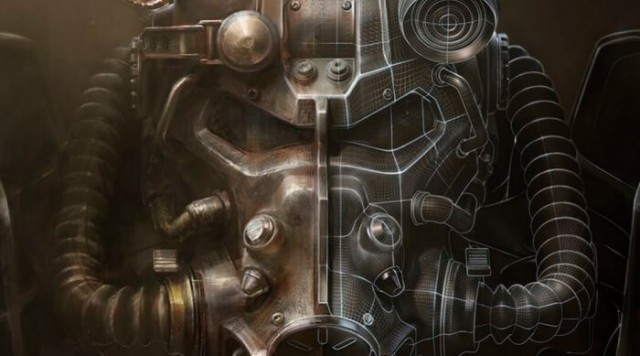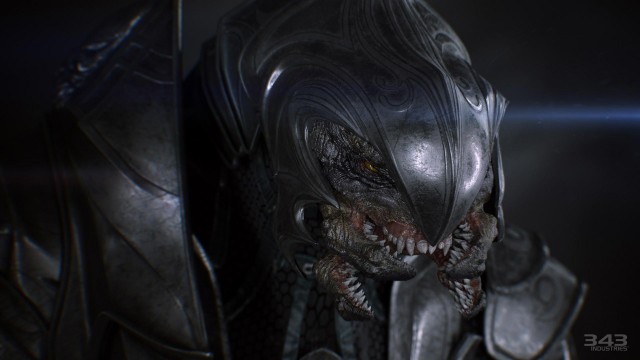


Life is Strange is the latest offering from Dontnod, developers of Remember Me. While their first game garnered somewhat average reviews, the French developer has shifted away from the third-person action genre to deliver a new experience in the same vein as Telltale Games' popular adventure series.
The initial episode of Life is Strange — aptly titled 'Chrysalis' — begins with an ominous nightmare sequence of freak weather ravaging the landscape, leaving only destruction behind and a looming sense of foreboding that seems to underline the otherwise sedate tone that follows — itself acting perhaps as a proverbial calm before the storm.
The fictional town of Arcadia Bay in Oregon provides an appropriate backdrop for the narrative, the Pacific Northwest often acting as the ideal scenery for tales of mystery and strange occurrences — and with a title like Life is Strange, one can certainly expect a story of similar intrigue. Perhaps deceptively, the premise is anything but. Players take on the role of Max Caulfield, an eighteen year old high school student who has undertaken a scholarship at Blackwell Academy — a prestigious, albeit fictional art school. So far, so normal.

As a character, Max adheres to the typical characteristics that one might expect from an introvert — quiet, sheltered and decidedly lacking in confidence. These are all traits that make her surprisingly relatable as a character. Max is unsure of herself and her talents, and must learn to come out of her shell — hence the appropriate title of the chapter. Astute book readers among you may recognize her name as a reference to the classic J.D. Salinger novel The Catcher in the Rye, although Max is much less of a curmudgeon than the character of Holden Caulfield.
Following her disturbing vision, and a brief introduction of some of the game’s cast in her photography class, Max decides to freshen up in the washroom where — in the form of a butterfly fluttering in through a vent — we are introduced to another subtle reference, the 2004 film The Butterfly Effect. Much like that film, Life Is Strange plays with the similar themes of time travel and the repercussions of altering past experiences in our lives. This did lead to some hope that Ashton Kutcher would make a surprise appearance. But he never did.
It is at this point when the narrative shifts to a darker tone; a male student walks into the washroom and begins mumbling to himself about committing acts of violence. Remaining hidden from view, Max quietly observes as another student - a young woman with rather striking blue hair - walks in and starts to argue with the young man. This would turn out to be not the most prudent decision however as he reveals a hidden firearm and starts to threaten her, ultimately claiming her life.

Following this traumatic event, the narrative takes a turn for the unorthodox when Max discovers that she has the latent ability to manipulate the passage of linear time, enabling her to rewind time by a few minutes. Not enough to make a serious influence on the world, but sufficient to prevent the murder of the blue-haired woman in the washroom. Faced with the incredulous nature of her newfound ability, Max - and by extension the player - now have the responsibility of harnessing that power.
This is where the themes in The Butterfly Effect start to come into play, as every alteration that Max makes by reverting time backwards will have consequences. Other than this strange new power in controlling the flow of time, things seem relatively normal at Blackwell Academy - that is except for the disappearance of Rachel Amber, a student who attended the school that disappeared under mysterious circumstances several months before the events of the game. This soon becomes central to the narrative, and helps to build up the mystery that one has come to expect from this experience.
Blackwell itself as a setting is bustling with the usual tropes and characters befitting a high school culture, with Max being able to interact with these characters. Each conversation will present a choice, and many of the decisions you make will have serious repercussions. One example which stood out as rather prominent was a scene in which the stepfather of a friend is berating her over her use of narcotics, while Max remains hidden in a closet. Do you choose to step out and take the fall for your friend, risking your scholarship in the process? Or do you remain hidden and watch as her stepfather continues his abuse? These are among a few of the choices you must make and the consequences you must deal with as the player.

While Life is Strange is peppered with tense situations and difficult decisions, much of the game feels rather mellow as Max learns about her new environment, socialises with the other students at Blackwell and attempts to make sense of her new abilities. As a video game, if it could even be called such, Life is Strange does not adhere to the typical methodology of a video game - driven by a narrative goal rather than an objective goal, harkening back to earlier graphic adventures like Hideo Kojima's Snatcher or a more recent offering in the form of 2010's Heavy Rain - albeit with a very different atmosphere and tone. Another more appropriate analogy would be to return to the mention of Telltale Games' collection of adventure games.
In short, rather than press the player on with a series of objective markers and checkpoints, Life is Strange crafts a compelling story interwoven with a plethora of characters. You could be mistaken into believing them to be typical high school archetypes, but reading deeper into the students of Blackwell you will discover that they possess many layers of depth. For example, a cheerleader you speak with comes across outwardly as jovial and high spirited, yet harbours a dark secret. Solid and believable characterisation is vital in a video game where its greatest asset is story.
Likewise, the world in which the game is set establishes itself as its own character with many quirky ways to interact with the environment. For example, in one of the game's more quiet sequences, I switched on the hi-fi in Max's room and relaxed to the sound of Jose Gonzalez's 'Crosses'. It was at that point that I knew I was completely immersed in the world of Life is Strange - and I loved it.

Beyond the narrative, there are numerous puzzle sequences which involve the use of Max's newfound time altering powers which were rather cleverly done, and didn't feel like they were tacked on - a trap which I have seen a number of other games fall into when endeavouring to apply a puzzle element. One could be forgiven for saying such remarks about a more action orientated title, but in a game like Life is Strange, getting that aspect right is crucial - and thankfully, they delivered.
Life is Strange is rated as "M" for Mature, and the opening gambit of its first episode paints a suitably adult and mature tale. With characters that are very human and relatable, a story that comes across as a healthy combination of normal and yet, compellingly strange. Much like life itself!
An engaging, quality piece of entertainment.
9.5 out of 10
A copy of the game was provided by the publisher. Life is Strange is released in episodic format.




 How to Get Infinite Money in The Sims 4
How to Get Infinite Money in The Sims 4 Bleach: Soul Resurreccion Walkthrough
Bleach: Soul Resurreccion Walkthrough Plants vs. Zombies: Garden Warfare Wiki – Everything you need to know about the game .
Plants vs. Zombies: Garden Warfare Wiki – Everything you need to know about the game . How To Complete Dark Souls 2 without resting at a bonfire
How To Complete Dark Souls 2 without resting at a bonfire Halo 5: Guardians Mythbuster Mega Guide
Halo 5: Guardians Mythbuster Mega Guide